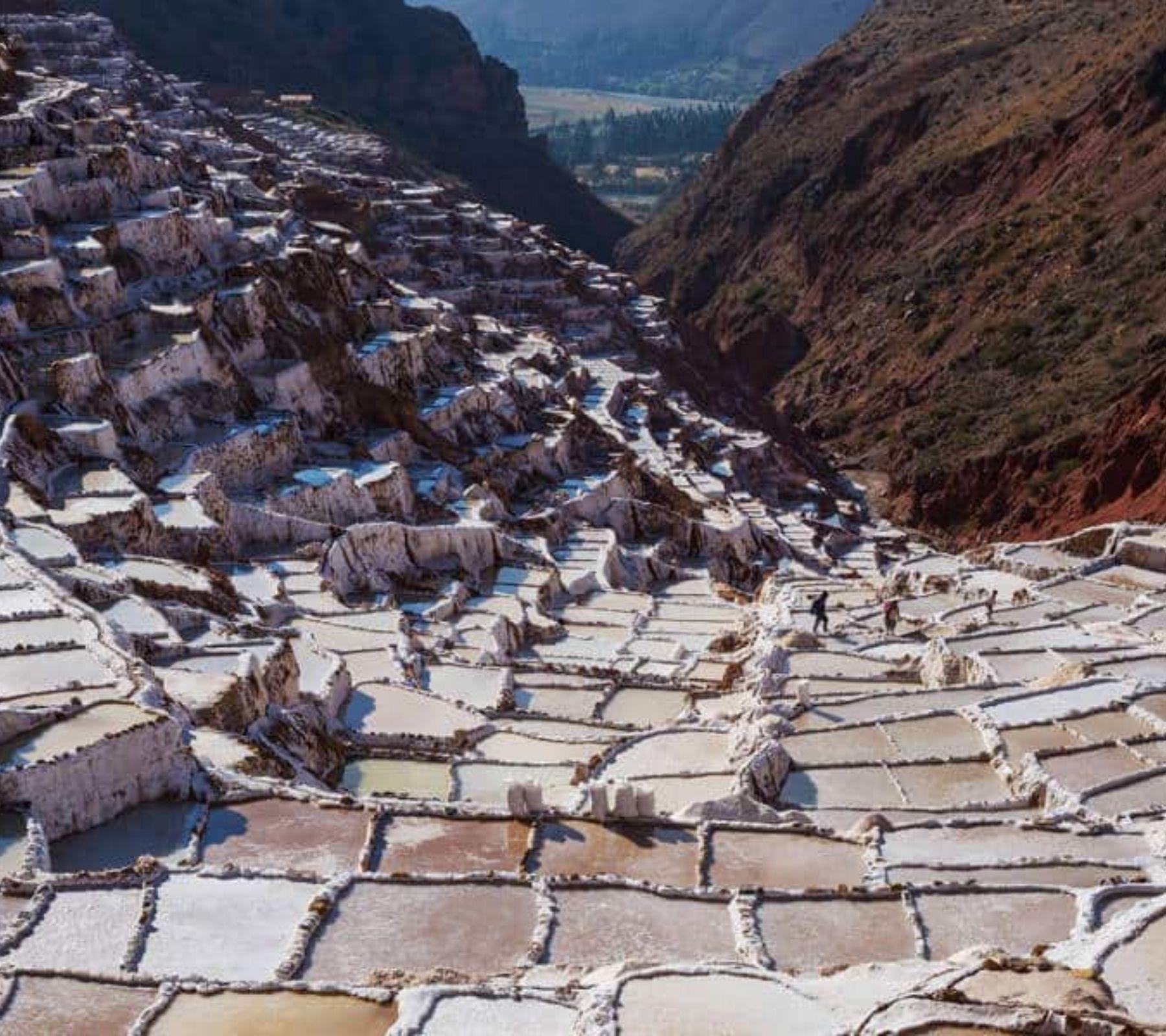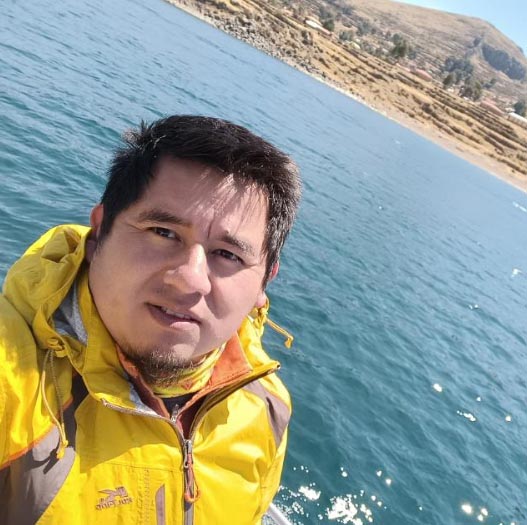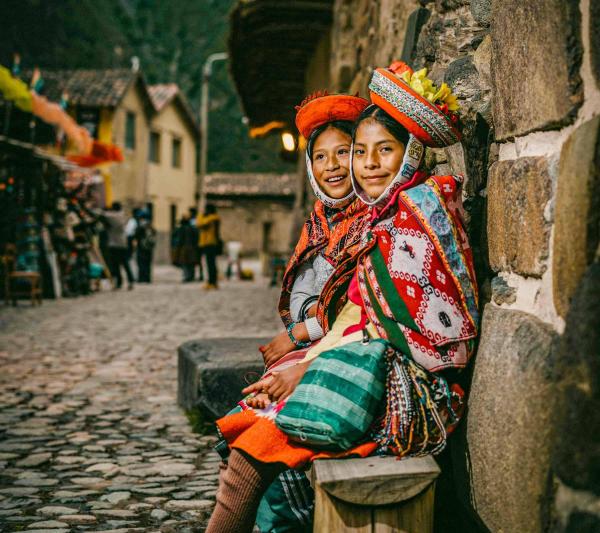There are no such things as traveler's sins, but if they did, failing to visit the Sacred Valley of the Incas would be one of them. And not a venial sin, but a truly grave one, one that is only forgiven with great contrition and penance.
And since prevention is better than cure, and it's best to be free from sin—even those that don't exist—we'll show you a list of 15 magical places that await you in a valley where history, culture, and tradition are framed within a landscape of mountains and snow-capped peaks.
Watered by the meandering waters of the Urubamba River, in the Sacred Valley, Mamapacha (Mother Earth) is generous and offers her finest grains and fruits, while the Apus (the protective mountains) stand as stern guardians of the men and women who work in the fields.
Adventure routes, colorful markets, and archaeological sites that reveal the significance of the Inca civilization are just some of the travel experiences that will free you from sin and allow you to enjoy, revel, relax, connect with nature, and learn more about Andean culture.
This is what the Sacred Valley offers. This is what you will discover and experience intensely if you follow our advice.
1. Explore the agricultural terraces of Moray
Plant and harvest, and also experiment. This is what the Incas did in Moray, where you will see circular and stepped terraces—similar to a large amphitheater—designed for agricultural research.
A society respectful of Mamapacha (Mother Earth), Andean engineers planted various crops on the terraces to perfect their agricultural techniques and evaluate plant adaptation and behavior at specific altitudes and microclimates.
Moray, 53 km from Cusco and at 3,385 m above sea level, will delight you not only for its agricultural terraces but also for its scenic surroundings, a characteristic that persists throughout the valley.
2. Explore the Living Inca City
Ollantaytambo: the town, the narrow streets, the stone houses, the archaeological park, and the train that announces its departure to Machu Picchu. These are some of the tourist highlights of the "Living Inca City," as this mountainous corner of the Sacred Valley is known.
A vibrant destination that maintains its Inca layout. Here you'll learn about Andean culture and customs. You'll also visit one of the best-preserved archaeological sites in Cusco. Some believe it was once a fortress, but it was most likely a tambo (lodging place).
Due to its strategic location (61 km from Cusco and at 2,792 m above sea level), Ollantaytambo is a strategic stop for travelers heading to Machu Picchu by rail or along the Inca Trail.
3. Go shopping at the Pisac market
If you love shopping, if you like handicrafts, and if you want to learn about the fruits of Mamapacha, you have to explore the Pisac market, or popular fair. It sells a little bit of everything, and offers bargaining and haggling, giving you a closer look at Andean customs and traditions.
Colorful, lively, and always bustling, the market offers a wide variety of handicrafts (textiles, ceramics, jewelry, wood sculptures, leatherwork, etc.) and agricultural products (native potatoes, giant corn from the Sacred Valley, ollucos, broad beans, and herbs and spices).
That's not all. Supplies and products are also available for performing tributes to the land and other Andean rituals. We won't tell you any more so you'll be amazed at the market, the archaeological site, and the town of Pisac, located 30 kilometers from Cusco at 2,972 meters above sea level.
4: Photograph the Valley from Taray
Before or after shopping for everything at the Pisac market, visit the Taray viewpoint, where you can capture excellent views of the Vilcabamba mountain range, the Urubamba River canyon, and the valley's striking farmlands.
This is what you'll see from this viewpoint, a strategic point for taking magnificent photographs of Cusco's landscape, breathing in the revitalizing air of the Andean mountains, and imagining what this place would have been like during Inca times.
Located next to the highway that connects Cusco with Pisac, in Taray you can buy various handicrafts, in case you missed a souvenir at the local market.
5. Try the salt from Maras
A village of colonial houses with carved stone doorways. A salt mine with more than 4,000 pools, arranged in stepped terraces that descend into the valley. Two in one in Maras, a unique destination 41 km from Cusco and at 3,330 m above sea level.
An excellent combination. From the village—with its colonial church, cobblestone streets, and houses with colorful doorways—to the salt mines where, since pre-Hispanic times, the substance that gives flavor to food has been extracted.
Take advantage of your visit to buy and taste the excellent Maras salt. There are also handicrafts and other products made with this edible mineral.
6. Ride an ATV in Maras
If you want to access places impossible for conventional vehicles. If you want to explore remote and untraveled areas. If you want to experience the adrenaline rush on winding roads, steep trails, and rocky areas... Dare to ride a Maras ATV!
Surrounded by stunning natural and cultural landscapes, Maras is the perfect setting for an ATV journey. Behind the wheel, you'll experience moments filled with excitement and adrenaline in one of the best places in the Sacred Valley of the Incas.
7. Learn to work the land
Share, talk, learn. Dare to experience your journey in the Sacred Valley in a different way. You'll plant the land using ancestral techniques and participate in rituals in gratitude to the land and the mountains. Yes, you'll be a community member who respects and preserves Andean traditions and customs.
Experiential tourism will allow you to connect in a unique way with the citizens of the valley. This approach will give you a different perspective on the lifestyle of the men and women who work the land, just as their parents and grandparents did.
Also keep in mind that experiential tourism directly benefits local residents, improving their economy, promoting sustainable development, and highlighting the importance of their culture.
8. Pay tribute to Mamapacha
In the Andean highlands and valleys, the descendants of pre-Hispanic peoples maintain their relationship of respect and affection with the sun, the earth, the water, and the mountains.
This relationship is expressed and manifested through deeply meaningful ceremonies and rituals. These are an integral part of the Andean worldview and allow people to connect with nature, to thank the earth for its fruits or to ask the mountains for protection.
Tributes to the land are called "pagos" or "pagapus," although this name is disputed because the ceremony is not a commercial transaction.
Mamapacha does not charge or demand remuneration for production. This is known by the community members who honor and thank her with heart, faith, and hope. They prepare offerings with agricultural products, candies, and other foods that they bury in a hole.
While they do so, they say prayers in Quechua, smoke an unfiltered cigarette, chew coca leaves, and toast with rum or aguardiente. You can be there, with them, learning and honoring the land. You'll see that it's an intense, mystical, and earthy experience.
9. Pedaling a Dirt Road
Neither by car nor on foot, but rather a short bike ride to explore the rural roads of the Sacred Valley of the Incas.
Cycling along unpaved paths that border fields of crops. Slowing down to greet the men and women who work the land or stopping in a traditional village to regain strength are part of a journey complemented by spectacular views of the mountains, the river, and the pre-Hispanic terraces (cultivation terraces on the hills).
A true adventure that will leave you with unforgettable memories. A true challenge that you must take on responsibly and with caution, so that you have the most fun on your vacation in Cusco.
10. Try the valley's cuisine
Get ready to enjoy a feast of flavors and exquisite seasoning in the restaurants of the Sacred Valley of the Incas, where the cuisines are nourished by the exquisite and varied agricultural products harvested in this blessed, fertile, and bountiful land.
Native potatoes, quinoa, corn, and a variety of fruits are some of the Andean ingredients used by cooks who learned their craft on a family stove and by chefs who perfected their techniques in refined schools to prepare delicacies that respect traditions or daring dishes that taste like fusion.
Don't pass up the opportunity to discover the valley's food. Whether in a market or a fine restaurant, your palate will be deeply grateful. So grateful that you'll want to try one more dish. v






